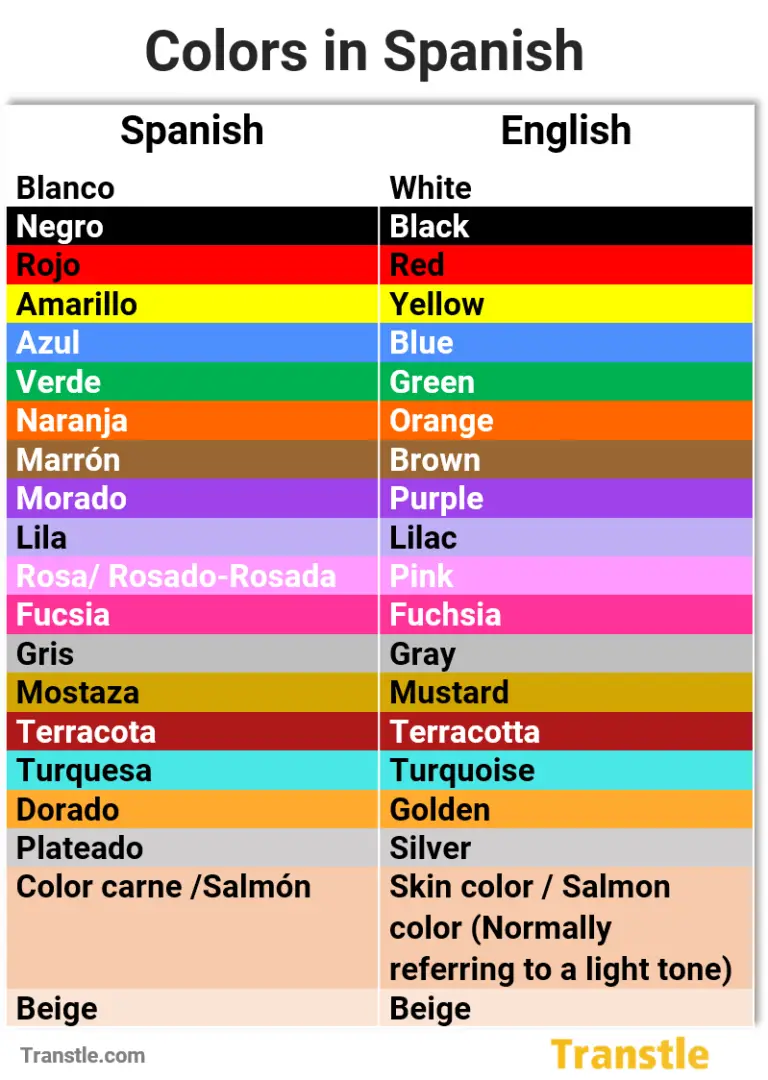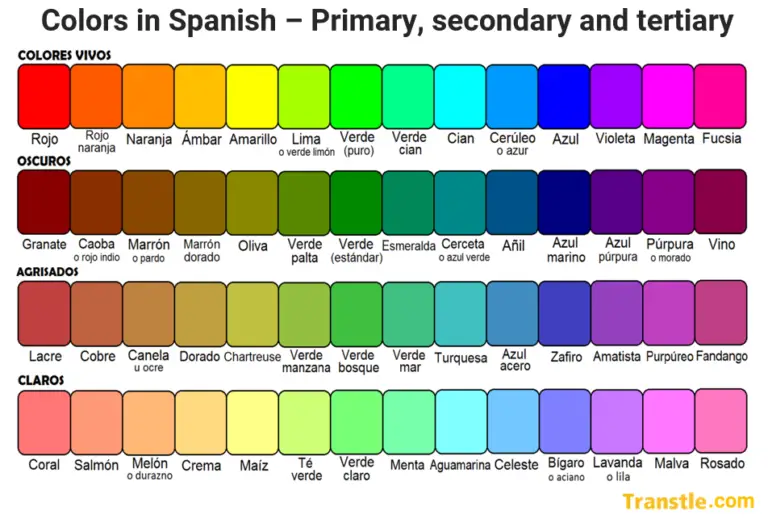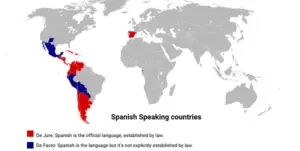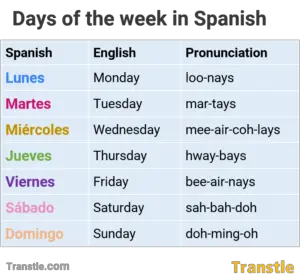Colors in Spanish: List, Pronunciation, Grammar & Examples
Colors in Spanish are used to express the color of people, animals and objects, for example, “The tree is green”, “James is white”. And also, by themselves, they are nouns, for example, “The color pink”, “I like red”. Colors also have rules for their use, such as the word order, this is explained here.
List of colors in Spanish

| Spanish | English |
| Blanco | White |
| Negro | Black |
| Rojo | Red |
| Amarillo | Yellow |
| Azul | Blue |
| Verde | Green |
| Naranja | Orange |
| Marrón | Brown |
| Morado | Purple |
| Lila | Lilac |
| Rosa/ Rosado-Rosada | Pink |
| Fucsia | Fuchsia |
| Gris | Gray |
| Mostaza | Mustard |
| Terracota | Terracotta |
| Turquesa | Turquoise |
| Dorado | Golden |
| Plateado | Silver |
| Color carne /Salmón | Skin color / Salmon color (Normally referring to a light tone) |
| Beige | Beige |
| Ambar | Amber |
| Lima | Lime |
| Verde menta | Mint green |
| Verde manzana | Apple green |
Other related terms
| Claro | Light |
| Oscuro | Dark |
| Pintar | Paint |
| Lápices de colores | Colored pencils |
| Combinación | Combination |
| Pintura | Painting |
| Primary Colors | Primary Colors |
| Secondary Colors | Secondary Colors |
| Tertiary Colors | Tertiary Colors |
| Azulado/a | Bluish |
| Grisaseo/a | Grayish |
Grammar rules
- The word “color” is a masculine word
When you talk about colors themselves, they are accompanied by the masculine articles El, los (The) and Un, unos (A, some)
|
- Colors agree with gender and number with the noun they describe
Agreement in gender
Colors are already masculine nouns, but they need to adapt to the noun they accompany in gender and number.
a. Colors that end with an – O replace the -O for -A at the end, to agree with feminine nouns.
|
b. Colors that don’t end in -O such as verde, azul, gris, beige stay the same, they don’t change with genders.
|
Agreement in number
The general rule is to add an -s to the color, however, there are exceptions to this rule, to learn more about this, read the lesson on the Spanish plural.
|
- Word order
Colors tend to go after the verb ser/estar (to be) and after nouns.
Ser/Estar + colors
|
Nouns + colors
|
Examples or sentences
|
Read next




